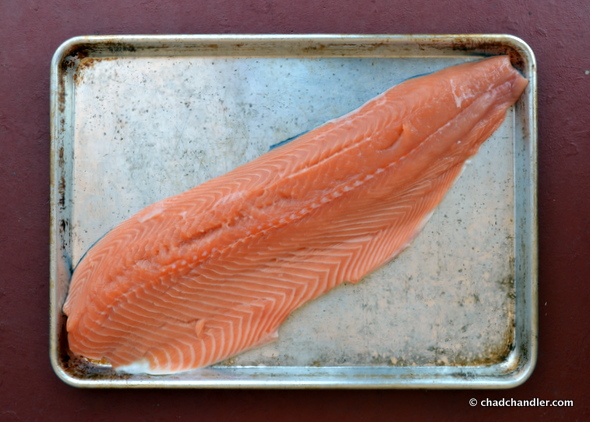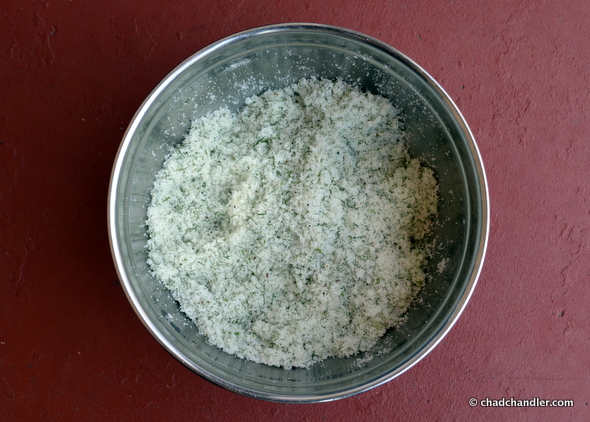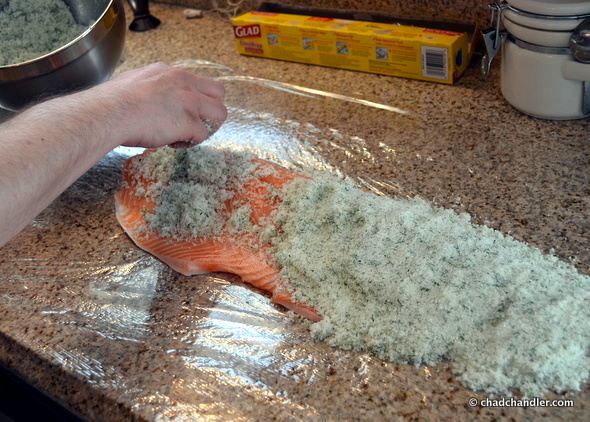
I love lox, or gravlax, to use the precise word. There are few food combinations that I think go as well together as lox, capers, and crème fraîche. Purists will argue that there are cultural and culinary differences between lox and gravlax. That was definitely true in 1913, but it’s not so true in 2013. Cured salmon seems to merely be referred to as lox unless the smoke is an integral part of the brand marketing process (or unless it’s from Nova Scotia).
Buying lox in large quantities is prohibitively expensive. When you make it at home, you can not only do it for a fraction of the cost of store-bought lox, but you also can control the flavor of the salmon. This recipe makes cured lox, so there’s no smoking required.
This is quick, easy, and relatively inexpensive. I think I originally based it on Mark Bittman’s old recipe from the ’90s.
Homemade Lox
- 1 fillet of salmon
- 2 cups sugar
- 1 cup salt
- 2 bunches dill, chopped
- 2 tablespoons vodka
- ½ teaspoon dill seed
- ½ teaspoon black pepper
Buy the freshest fillet of salmon you can find. It’ll probably weight between 2-3 pounds. Run your fingers over the ribs and remove any pin bones that remain.

In a large bowl, thoroughly mix all of the remaining ingredients.

Lay the salmon on some plastic wrap, skin-side down. Pack all of the curing mixture over the fleshy side of the fish.

Tightly wrap the fish with a few layers of plastic wrap and toss it into the refrigerator for 36-48 hours. The amount of time it takes to cure your lox depends on the amount of salt you use and whether or not you incorporate citric acid into your brine. This recipe uses a lot of salt, so it only takes a little while.
Some recipes call for weighing the fish down. You can do that if you want, but I think it’s a holdover technique from when people used to stack one salmon fillet on top of another with the curing seasoning in between. I don’t even bother.

Once the salmon has had time to cure, remove the fish from the plastic wrap and rinse it generously with cool water to remove all of the brine.

Grease a long, sharp knife with a little nonstick spray. Carefully separate the flesh from the skin at the tail-end of the fish. Slowly work the knife at a slight angle to separate the skin completely—much the same way you remove silver skin from a pork tenderloin.

Finally, use the oily knife to slice the lox on the bias into the thinnest pieces possible.
Serve with whatever condiments you prefer. Most of the time, people serve lox with some kind of bread or crackers, pickled capers, thinly sliced red onion, and cream cheese or crème fraîche. If you can’t find crème fraîche at your local market, just mix the juice from half of a lemon with 8 ounces of sour cream.






